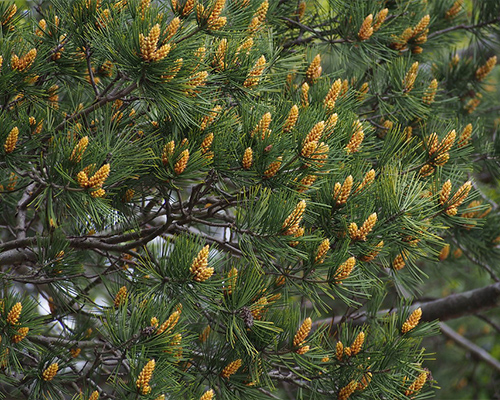Lacebark Pine
Pinus bungeana
Overview
The Lacebark pine has a very distance feature that makes it unique to other pine trees. Its bark! The Lacebark pine trees bark, when mature, peels to reveal different shades of bark. The colors can range from green, cream, and brown. Its pine needles are stiff and dark green in color. This tree also produces woody pine cones growing around 3 inches in length. This pine is slow-growing and grows 30-50 feet tall and 20-35 feet wide.
Cultivation
The Lacebark pine can be a multi-trunk tree or a single trunk. This tree is also strong against most diseases and insects common among pines. However, its branches are brittle and tend to snap in icy winter storms. The Lacebark pine prefers well-drained soils along with full sun and some afternoon shade.
Biodiversity Sustained
This tree supports the Imperial Moth larvae, which only have one brood per season! Along with this the tree also has tough bark that will not break off very easily when deer are rubbing their antlers on it.
On Xavier's Campus, over the Next 20 Years, this Tree will:
Stormwater Runoff Intercepted: 53,650 Gallons
CO2 Reduction: 2,070 lbs
Electricity Savings: 720 kilowatt/hours
Environmental Benefits (in US dollars): $510
